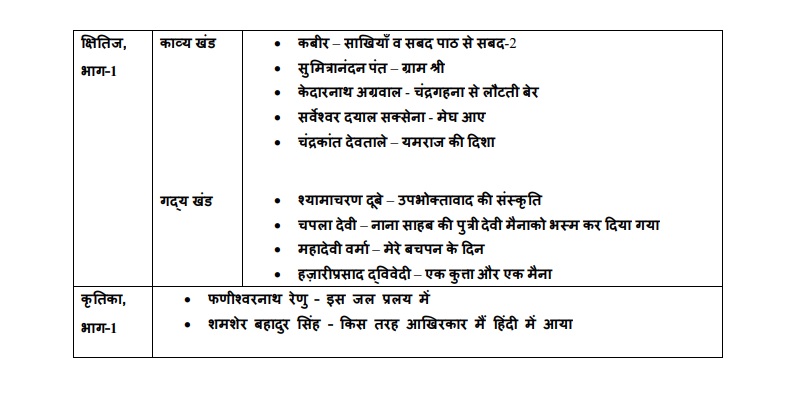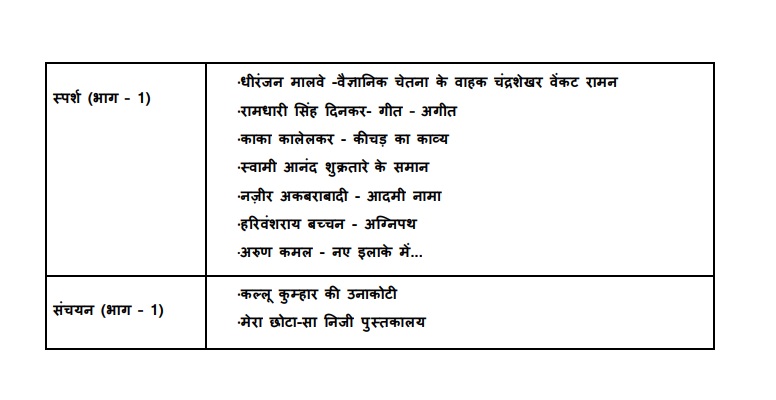The prevailing health emergency in the country and at different parts of the world as well as the efforts to contain the spread of Covid-19 pandemic has resulted in loss of class room teaching due to closure of schools. Therefore the Board has decided to revise the syllabi for classes IX-XII for the academic session 2020-21.
The Heads of Schools and Teachers may ensure that the topics that have been reduced are also explained to the students to the extent required to connect different topics. However the reduced syllabus will not be part of the topics for Internal Assessment and year-end Board Examination.
The deleted topics are as under:
1. Computer Application:
A. Scratch or Python (Unit-4)
Alternative 1: Educational programming language – Scratch
- Introduction to Scratch.
- Drag and drop commands, creating simple scripts, repeating blocks of commands.
- Discuss x-y plane, create scripts to move the cat (Scratch mascot).
- Create a script to draw diagrams using the pen feature.
OR
Alternative 2: Python
- Programming Basics: Algorithms and Flowcharts
- Characteristics of a good program
- Introduction to Python
- A simple “Hello World" program
- Running a Python program
NOTE: In the same sequence, Python programs removed from the Practical syllabus of 9th class.
2. English - Language and Literature:
A. Grammar:
- Use of Passive Voice
- Clauses: Noun, Adverb Clauses of condition and time, Relative
- Prepositions
B. Writing:
- Letter on a situation
- Descriptive Paragraph on a place/event
C. Literature:
i. BEEHIVE
- The Lake Isle of Innisfree
- The Snake & The Mirror
- The Duck & The Kangaroo
- Kathmandu
- A Slumber Did My Spirit Seal
ii. MOMENTS
- Ishwaran the Storyteller
- The Accidental Tourist
3. Hindi-A:

4. Hindi-B:

5. Home Science:
A. Food, Nutrition and Health (Unit-IV)
- Methods of cooking and processing
B. Fibre and Fabric (Unit-V)
- Methods of Fabric construction
- Selection of fabric
6. Mathematics:
A. Number Systems (Unit-I)
i. Real Numbers
- Representation of terminating / non-terminating recurring decimals on the number line through successive magnification.
- Explaining that every real number is represented by a unique point on the number line and conversely, viz. every point on the number line represents a unique real number.
- Definition of nth root of a real number.
B. Algebra (Unit-II)
i. Polynomials
- Motivate and State the Remainder Theorem with examples.
- Statement and proof of the Factor Theorem.
- x3+y3+z3-3xyz
ii. Linear Equations in Two Variables
- Examples, problems on Ratio and Proportion
iii. Introduction to Euclid's Geometry (Complete Chapter)
iv. Triangles
- Proof of the theorem: Two triangles are congruent if any two angles and the included side of one triangle is equal to any two angles and the included side of the other triangle (ASA Congruence).
- Triangle inequalities and relation between ‘angle and facing side' inequalities in triangles
v. Area (Complete Chapter)
vi. Circles
- There is one and only one circle passing through three given non-collinear points.
- If a line segment joining two points subtends equal angle at two other points lying on the same side of the line containing the segment, the four points lie on a circle.
vii. Constructions
- Construction of a triangle of given perimeter and base angles
C. Mensuration (Unit-V)
i. Area
- Application of Heron’s Formula in finding the area of a quadrilateral
D. Statistics & Probability (Unit-VI)
i. Statistics
- Histograms (with varying base lengths),
- Frequency polygons.
- Mean, median and mode of ungrouped data
7. Science
A. Matter-Nature and Behaviour (Unit-I)
i. Matter in Our Surroundings
- Definition of matter; solid, liquid and gas
- Characteristics - shape, volume, density
- Change of state-melting (absorption of heat), freezing, evaporation (cooling by evaporation), condensation, sublimation.
B. Organization in the Living World (Unit-II)
i. Diversity in Living Organisms:
- Diversity of plants and animals-basic issues in scientific naming, basis of classification.
- Hierarchy of categories / groups, Major groups of plants (salient features) (Bacteria, Thallophyta, Bryophyta, Pteridophyta, Gymnosperms and Angiosperms).
- Major groups of animals (salient features) (Non-chordates upto phyla and chordates upto classes).
C. Motion, Force and Work (Unit-III)
i. Floatation:
- Thrust and Pressure.
- Archimedes’ Principle
- Buoyancy
- Elementary idea of Relative Density.
ii. Sound:
- Nature of sound and its propagation in various media, speed of sound, range of hearing in humans;
- Ultrasound
- Reflection of sound
- Echo and SONAR. Structure of the Human Ear (Auditory aspect only)
D. Our Environment (Unit-IV)
i. Physical resources
- Air, Water, Soil. Air for respiration, for combustion, for moderating temperatures
- Movements of air and its role in bringing rains across India.
- Air, water and soil pollution (brief introduction).
- Holes in ozone layer and the probable damages.
ii. Bio-geo chemical cycles in nature
- Water, Oxygen, Carbon and Nitrogen.
E. Food Production (Unit-V)
i. Improvement in Food Resources
- Plant and animal breeding and selection for quality improvement and management
- Use of fertilizers and manures
- Protection from pests and diseases
- Organic farming
F. Deleted Practicals:
1. Separation of the components of a mixture of sand, common salt and ammonium chloride (or camphor).
2. Determination of the melting point of ice and the boiling point of water.
3. Verification of the Laws of reflection of sound.
4. Determination of the speed of a pulse propagated through a stretched string/slinky (helical spring).
5. Study of the characteristics of Spirogyra, Agaricus, Moss, Fern, Pinus (either with male or female cone) and an Angiospermic plant. Draw and give two identifying features of the groups they belong to.
6. Observe the given pictures/charts/models of earthworm, cockroach, bony fish and bird. For each organism, draw their picture and record:
a) one specific feature of its phylum.
b) one adaptive feature with reference to its habitat.
7. Study of the external features of root, stem, leaf and flower of monocot and dicot plants
G. Internal Assessment:
- Natural Resources
- Balance in nature
8. Social Science
A. India and The Contemporary World – I (History) (Unit-1)
i. Section 2: Livelihoods, Economies and Societies
- Chapter IV: Forest Society and Colonialism (Complete Chapter)
- Chapter V: Pastoralists in the Modern World (Complete Chapter)
B. Contemporary India – 1 (Geography) (Unit-2)
i. Chapter 3: Drainage (Complete Chapter except for Map Items which will be assessed in the Examination)
ii. Chapter 6: Population (Complete Chapter)
C. Democratic Politics – I (Political Science) (Unit-3)
i. Chapter 2: Constitutional Design (Democratic Constitution in South Africa Only)
ii. Chapter 5: Democratic Rights (Complete Chapter)
D. Economics
i. Chapter 4: Food Security in India (Complete Chapter)
(Also read: CBSE deleted certain topics from syllabus for session 2020-21)
(Also read: Safety tips for your Credit Card)
(Also read: Mild or medium color blind person will also get Driving License now)
(Also read: Muslims from India will not go to Saudi Arabia to perform Haj 2020)
(Also read: Government made available Sanitary Napkins for Rs. 1 only)
Disclaimer: The above post includes some content used from CBSE website and executed on this website for fair use only. As this website is of educational nature, hence the content is used for education and awareness to the public.

